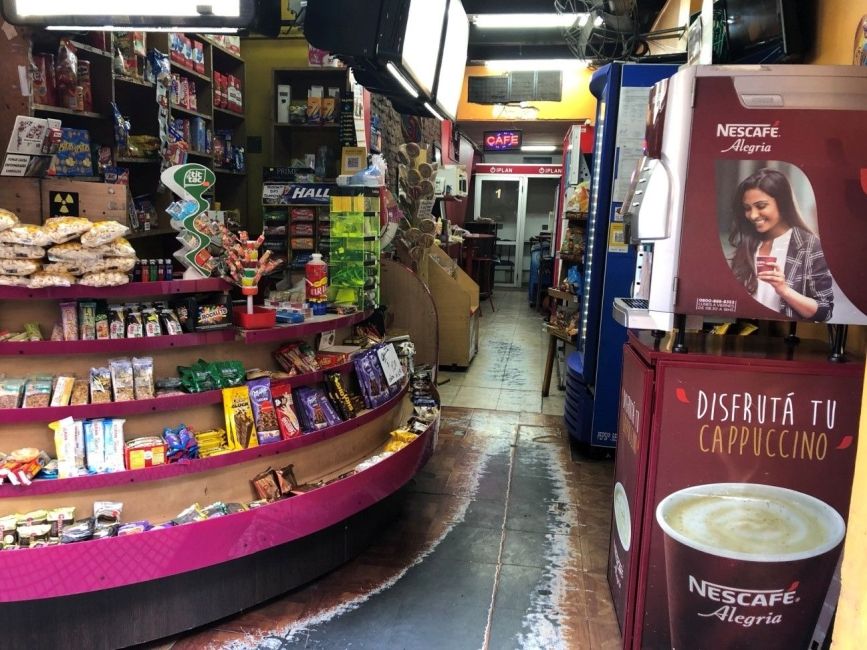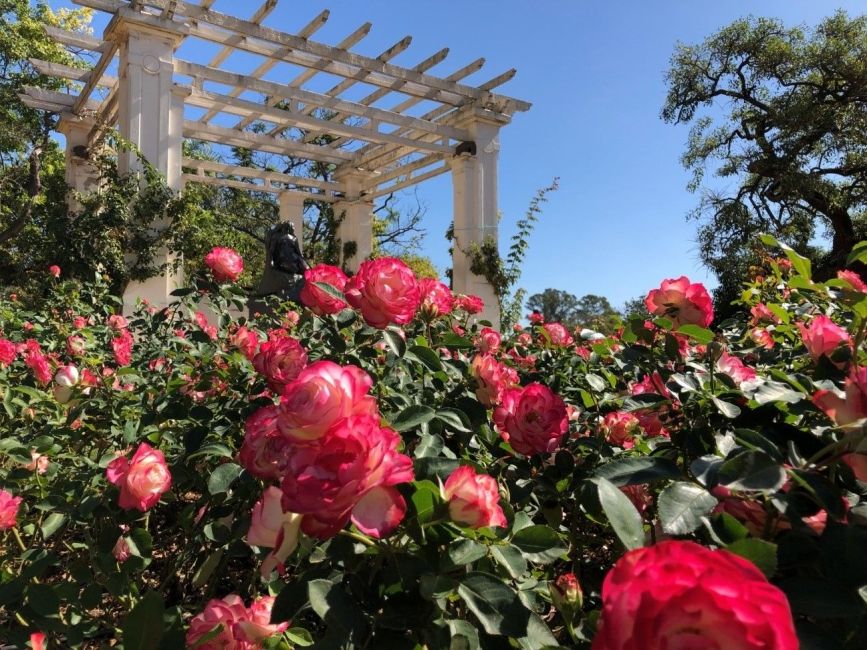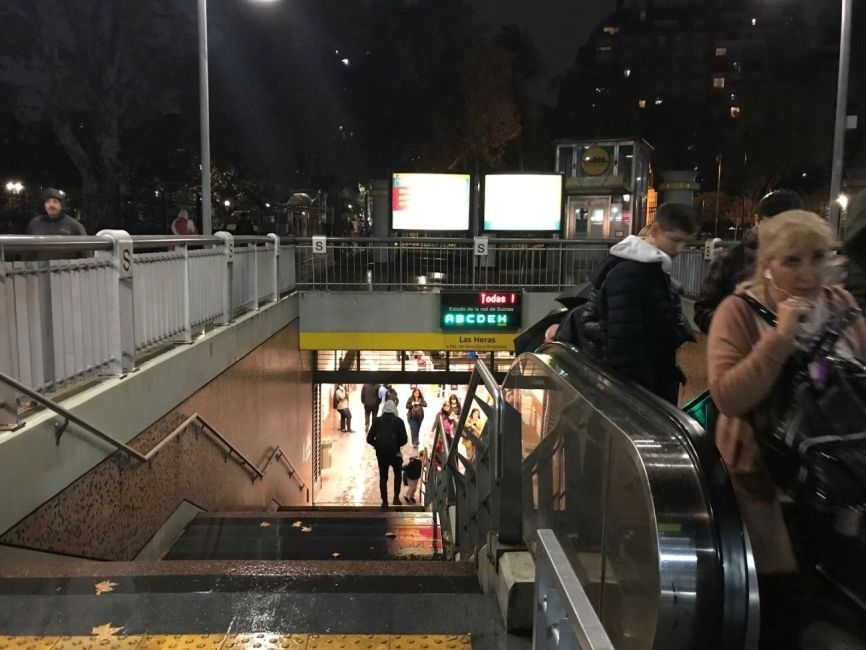Urban Chronicles
By Professor Hernán Ronsino
The urban chronicles that are presented below were written in the History and Literature course coordinated by Professor Hernán Ronsino, in the Liberal Arts program of CIEE. They are instants, very personal reflections that stop in some small fragment of the city of Buenos Aires and form a very diverse and enriching mosaic of the complex urban plot.
By Valerie Medlin
My Kiosko is located about half a block away from the corner of Corrientes and Uruguay. If you are walking towards the Obelisco, right when you start to hear "aaaaaaaprovecha la oferta...cargadores para el celular...caaargadores," take a right, walk about twenty feet, and you will find it. (If the man with the chargers isn't on the corner, don't worry, he's probably chatting with Ángel at the door of the Kiosko. And if it's dark, just when you start to get a whiff of the incense burning in front of Cine Lorca, turn right. Even though street is full of the high pitch squeaks from the 'bondis' breaking, screams of crowds celebrating or protesting heading towards 9 de julio, chats from the elderly, arm in arm, talking about the play they just watched, people laughing while they wait to try the best pizza in the city in l piso familiar' at Güerrin, or the perpetual clanging from the construction (because "together, we are putting the city back together"), my Kiosko is where I can just take a breath. When I am hanging out with my people in the tiny doorway of the kiosko, eating an alfajor, I don't have to worry about the work waiting for me up in my room.
By Maggie McCabe
The area around the Forests and the Rose Garden is very modern. There is always construction because it’s an election year. The government is constantly “fixing” the sidewalks, the statues, the spaces - such as the Botanical Gardens, the eco-park, etc. But I have never seen construction in the Rose Gardens. In my experience, the gardens have thus far eluded that noise and ruckus.
The Forests in Palermo were built to celebrate the centennial of Buenos Aires. The government spent a lot of money and time to create them. I visited these forests recently on a field-trip with my Spanish grammar class, and I learned a little about the history. It’s an incredibly green and lush area with innumerable statues designed to invoke the sense and fantasy of a forest. There is a statue of the Little Red Riding Hood, alluding to the children’s tale of the little girl wandering through the woods. Also, there are many statues and images of animals in various places in the parks. All trying to create the sense of a forest within the city, all trying to transform the Bosques de Palermo into more than just parks and green space. The presence of these statues and the fantasy that they invoke, there exists the reasons behind their creation and addition to the Forests of Palermo.
By Charlotte Saltzgaber
I'm not from a city. I come from a small town in New England in the United States. I’m used to being surrounded by trees, rivers, and mountains, not millions of people. When it gets overwhelming and I need to escape I walk to the park. I watch others doing the same. They lie on the grass, chat, and soak up the sun. Everyone breathes deeper in the park. I like the juxtaposition of it all, how there exists a green escape in the middle of the bustling city. From the bench I sit on, I look at the shining water and the bright flowers of Paseo el Rosedal. If I look up, above the trees, I can see the tops of the skyscrapers.
My favorite day to go to the park is Sunday. When no one has work, the people flood the park. From my bench, I like to people-watch. There are hundreds rollerskating. They go around, and around, and around the pond. I try to see how many laps they make, but I am distracted by my thoughts and lose count. Some ride together, laughing and talking as they fly. Others ride alone, with music or the sounds of the park as their company. Couples share blankets, picnics, and tranquil moments together. Parents smile as they chase their kids, happy to have the family all together. The park is full of bliss.
By Mae Ertl
During the first few weeks that I was in Buenos Aires, I would walk around my homestay family’s apartment building—towards Las Heras or Pueyrredon or Santa Fe or Coronel Diaz, safe inside my circle of familiarity. Sometimes,when I had to go to a new place, I would write the directions in a smallnotebook, which had the dual purpose of ensuring that I wasn’t robbed and
that I was present in the city, paying attention to my surroundings, learning the streets, the ways of life. The irony was that, in virtue of the notebook and my circle of security, I had denied myself the opportunityof getting lost— the best way to explore and learn.
Everything changed when I discovered the H line. I only live three blocks from the Las Heras station, but I didn’t know how the subway worked until two other students in the program showed me. The H line opened up a worldof possibilities, I could leave my neighborhood, my security network, and see the parts of the city that everyone had been talking about, like Puerto Madero or maybe San Telmo. And shortly after this discovery, I threw out he tiny notebook.
Related Posts
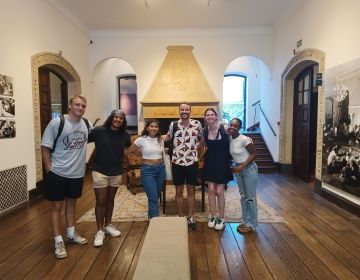
Building transformational leaders
By Professor Bruno Nunes During this Spring block II, in the Transformational Leadership Across Culture course we’ve explored the different political, economic and social leaders and leadership styles, skills, traits... keep reading
Argentine sobremesa
There’s a chalkboard in my host mom’s kitchen that for the past few months has read, “La vida es más linda cuando la compartimos”. I’ve done a lot of reflecting... keep reading
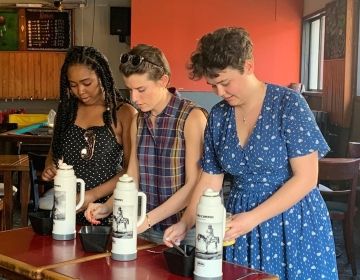
Spanish and Mate: making new friends in Buenos Aires
By Open Campus Student, Kelsey Lynn Dearing CIEE Buenos Aires offers students the opportunity of meeting locals, Porteños, at Mate Club. Every Tuesday, Thursday and Saturday Argentineans seeking for new... keep reading
